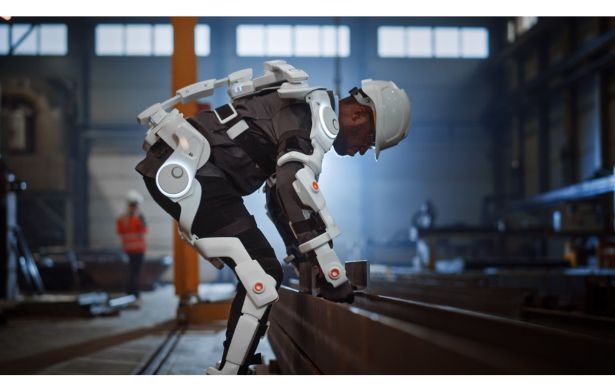
Designed a typical construction task where passive and wearable robots were used, and their biomechanical benefits were assessed using EMG, IMU sensors, and Borg scale.
Abstract
Despite efforts to reduce work-related musculoskeletal disorders in the construction industry, the challenge persists, particularly among construction trades like carpenters. This study assesses the effectiveness of an active back-support exoskeleton for reducing these disorders during carpentry framing tasks. The assessment encompasses various metrics, including muscle activity, range of motion, perceived discomfort, and perceived exertion. Sixteen participants were engaged in a simulated carpentry framing task, during which data were collected from both subjective evaluations using Borg CR-10 and CR-20 scales and objective measurements employing Electromyography and Inertial Measurement Units. The results are presented through a combination of descriptive and inferential statistical tests. The findings indicate a significant reduction in muscle activity when utilising the active back-support exoskeleton, with reductions ranging from 16% to 54% across various subtasks. Notably, the right rectus femoris and the left erector spinae experienced more statistically significant reductions in muscle activity in most of the carpentry framing tasks. Dynamic time-warping similarity scores were used to validate the muscle activity results, which show consistency. The use of the exoskeleton also led to a decrease in the range of motion during assembly and nailing subtasks. While the perceived discomfort and exertion did not show statistical significance, there was a reduction in these metrics during exoskeleton use. This study contributes to the expanding knowledge base on the suitability of exoskeletons in the construction industry. Importantly, it provides a valuable benchmark for evaluating the effectiveness of similar active exoskeletons within the construction sector.
Okunola, A., Akanmu, A., Afolabi., A. (2024) Assessment of Active Back-Support Exoskeleton for Carpentry Task: Muscle Activity and Range of Motion. Emerald Journal of Engineering Design and Management https://doi.org/10.1108/JEDT-01-2024-0044.
Okunola, A., Akanmu, A., Afolabi., A. (2025) Assessment of Active Back-support Exoskeleton on Carpentry Framing Tasks: Muscle Activity, Range of Motion, Discomfort, and Exertion. Elsevier, International Journal of Industrial Ergonomics. https://doi.org/10.1016/j.ergon.2025.103716
Okunola, A., Akanmu, A., Yusuf, A. (2023). Comparison of Active and Passive Back-Support Exoskeletons for Construction Work: Range of Motion, Discomfort, Usability, Exertion, and Cognitive Load Assessments. Emerald Journal of Smart and Sustainable Built Environment, https://doi.org/10.1108/SASBE-06-2023-0147.
Okunola, A., Akanmu, A., Gonsalves, N., Yusuf, A., Jebelli, H., (2023). Pilot Study of Powered Wearable Robot Use for Simulated Flooring Work. 2023 ASCE International Conference on Computing in Civil Engineering, Corvallis, Oregon, US. https://doi.org/10.1061/9780784485224.098.
Methodology
